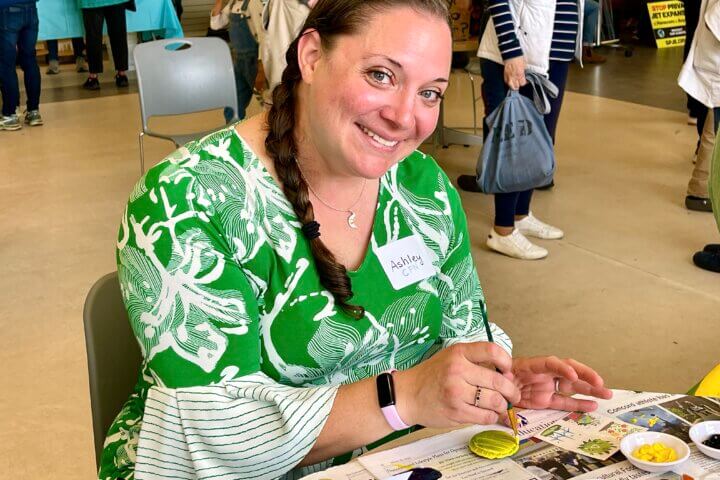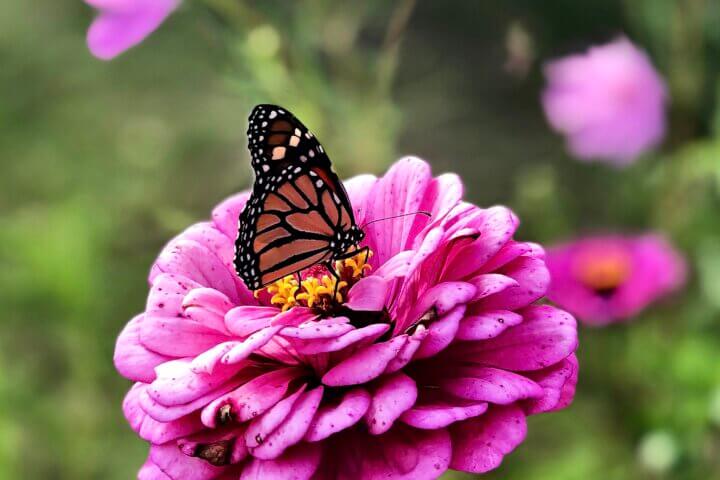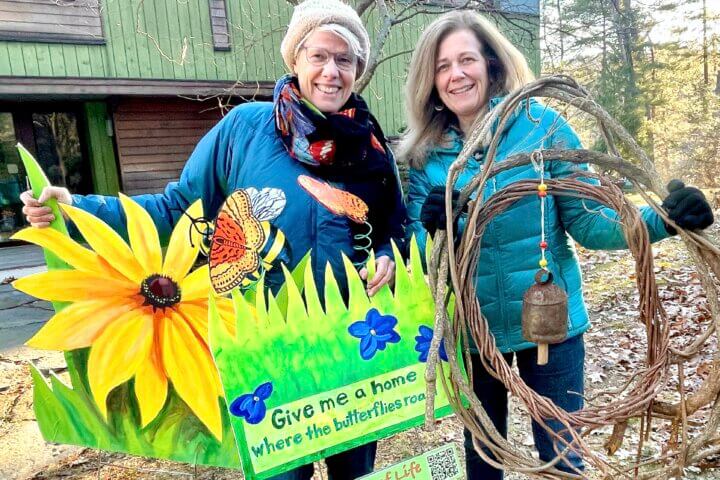Sometimes I can see the pellets, and sometimes I can smell it, especially running at night when the air is still: Another pesticide-treated yard, marked with those little yellow signs stating the danger to pets and people.
Concord is the town of Thoreau, known for its transcendental naturalist writers. A thoughtful place, with thoughtful citizens. So why do we willingly poison our land this way?
In the U.S., a staggering 70 million pounds of pesticides are applied to our 40 million acres of yards annually. Lawns are not disconnected from the earth. When it rains, adjacent drains wash these toxins into our rivers and streams, into our groundwater.
Honeybees have become poster children for the dangers of pesticides as their numbers have dropped by 90% since 1967.
They make honey, but they also pollinate (fertilize) 80% of the food we need to survive. Popular “neonic” pesticides, often combined with fertilizer and used in yard treatments, are highly toxic to bees. These “systemic” pesticides are absorbed by plants, impacting non-target insects when they feed on flowers.
As an aside, since these chemicals kill everything in the soil, I often see treated yards looking sick, with bare patches. I’ve heard these “subscription” companies then upsell homeowners on more treatments.
Most mosquito treatments kill every insect on contact, including butterflies, bees and fireflies. They claim “naturally derived”, since they are synthesized from a chemical in chrysanthemums, but these man-made versions are far more toxic. The dying insects make easy pickings for birds, who then receive a concentrated dose. Songbird populations in the US are down about 30% since 1970, or three billion birds.
These chemicals are harmful to people too: Of 30 commonly used lawn pesticides, 16 are probable or possible carcinogens, 12 are linked with birth defects, 21 with reproductive effects, 14 are neurotoxic, 25 cause liver damage, and 17 potentially disrupt hormones. Researchers at Harvard/UCLA recently linked 10 pesticides to Parkinson’s disease.
Round-Up (glyphosate) is now cited by the WHO as a likely carcinogen — fueling multiple lawsuits by lymphoma survivors against its maker. Glyphosate used for weed control was in the urine of 80% of U.S. kids and adults tested in 2022.
Children are especially vulnerable, with exposure linked to cancers, ADHD and asthma. Neonic pesticides were detected in the blood of 50% of U.S. children ages three to five. These pesticides are absorbed directly through playing on grass, and are also tracked inside, impacting kids (and pets) through contact with carpets. (Want to learn more? This fact sheet is excellent, with sources cited: https://tinyurl.com/mp78kwfe)
If these lawn chemicals are so dangerous, why are they allowed? In the U.S., the laws seem to be written to benefit the chemical companies. A 2019 report shows we allow 85 different pesticides that have been banned in the E.U., China or Brazil.
If you treat your yard or spray for mosquitos, please consider an organic alternative. They are far safer for bees and pollinators, non-toxic to kids and pets, won’t pollute the groundwater and usually mean a healthier, more vibrant lawn or garden in the long run. Forbes has a great article on the subject here: https://tinyurl.com/6wj548fr
The bees do not know your flowers are tainted with neonics. The songbirds cannot taste the toxic mosquito spray on the dying bugs they collect. Our town aquifers cannot stop the yard chemicals leaching down into them. But we can do something. I hope you will consider making a change and remember that Time Outdoors includes your yard — a yard connected to the environment we all share.
________________________________
Wilson Kerr lives in Concord and is an avid outdoorsman and amateur naturalist. This monthly column is written to help grow awareness of the wonders of nature. In this increasingly fast-paced and technology-packed world, it is important to stop and take in the beauty of our area and the animals that inhabit it. The author hopes this column will be read by families and used as a teaching tool and that you will spend more … Time Outdoors.





